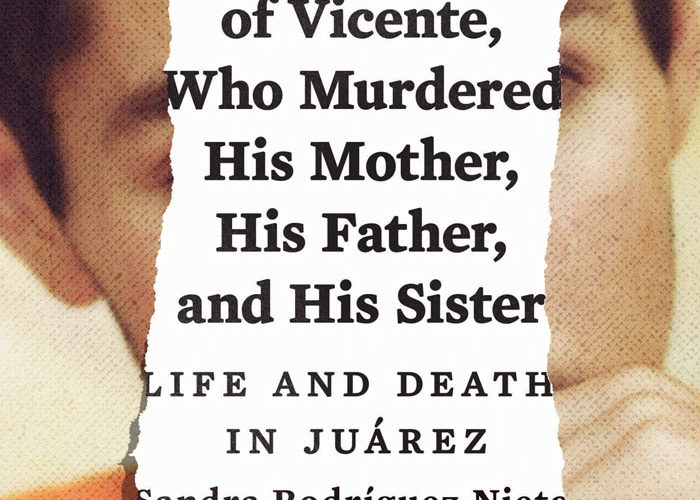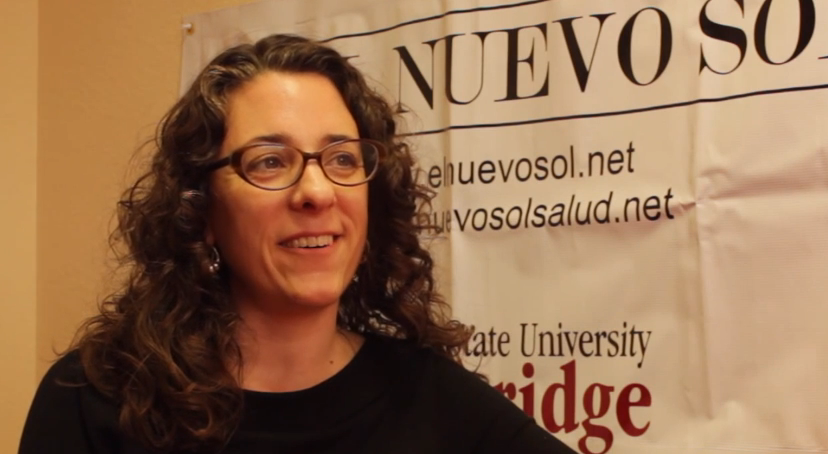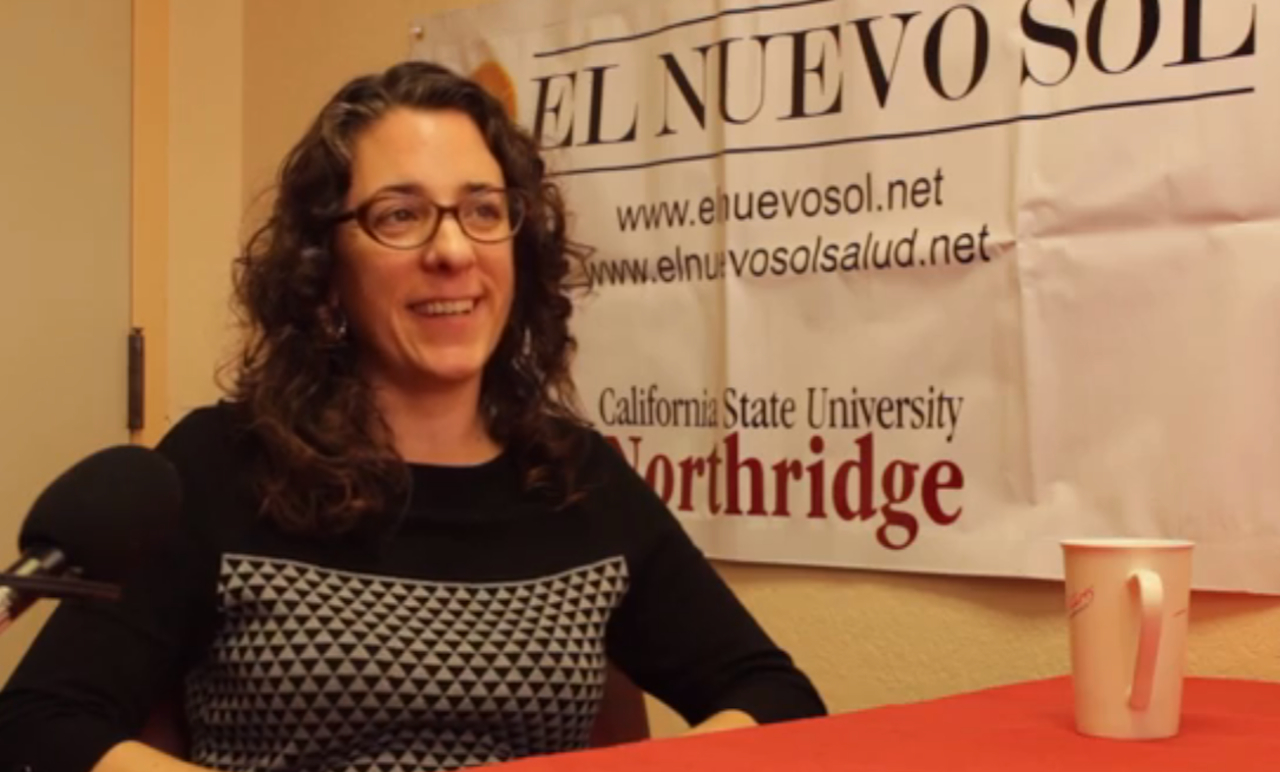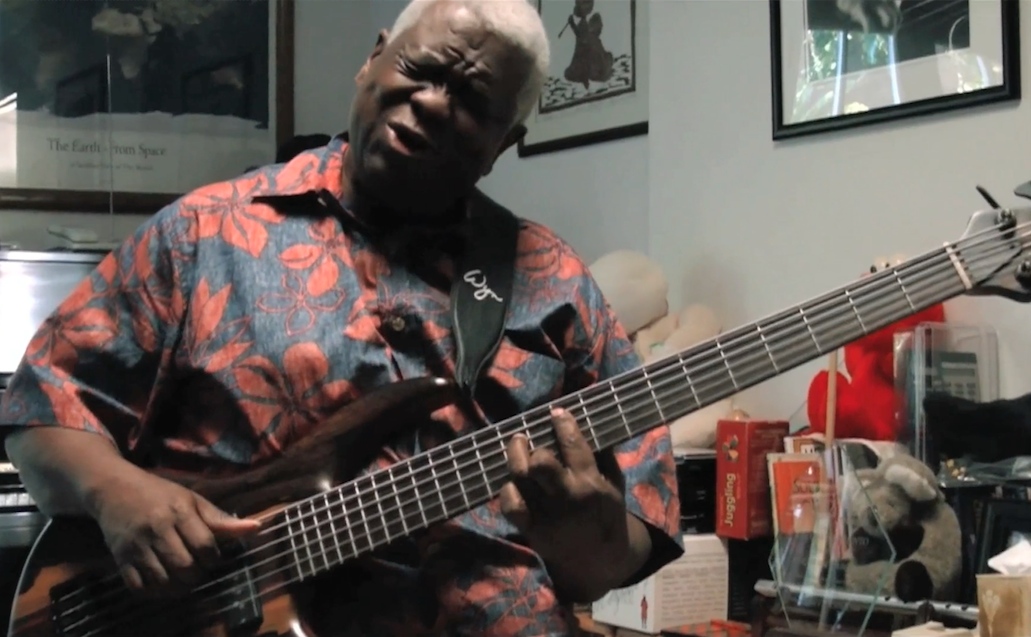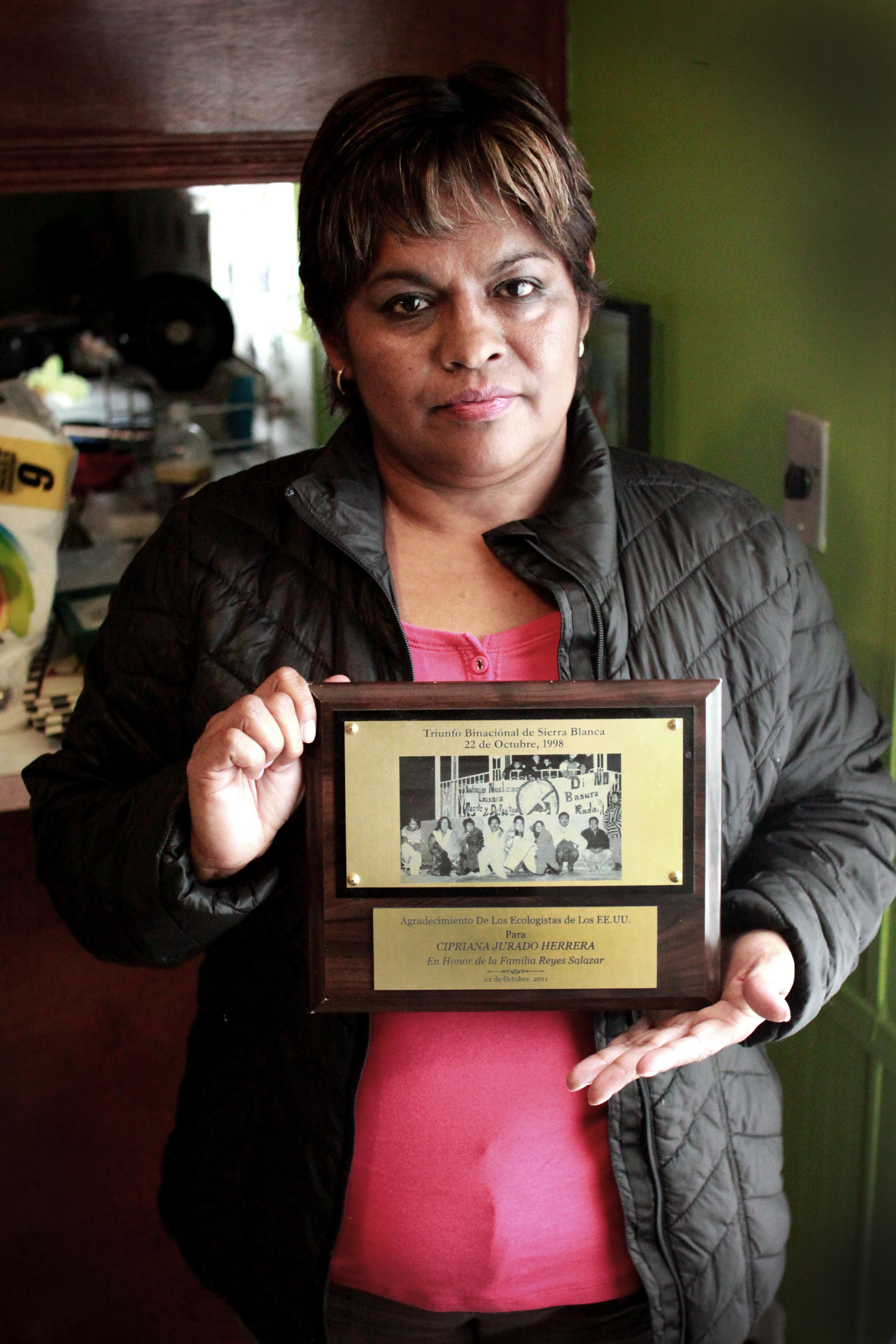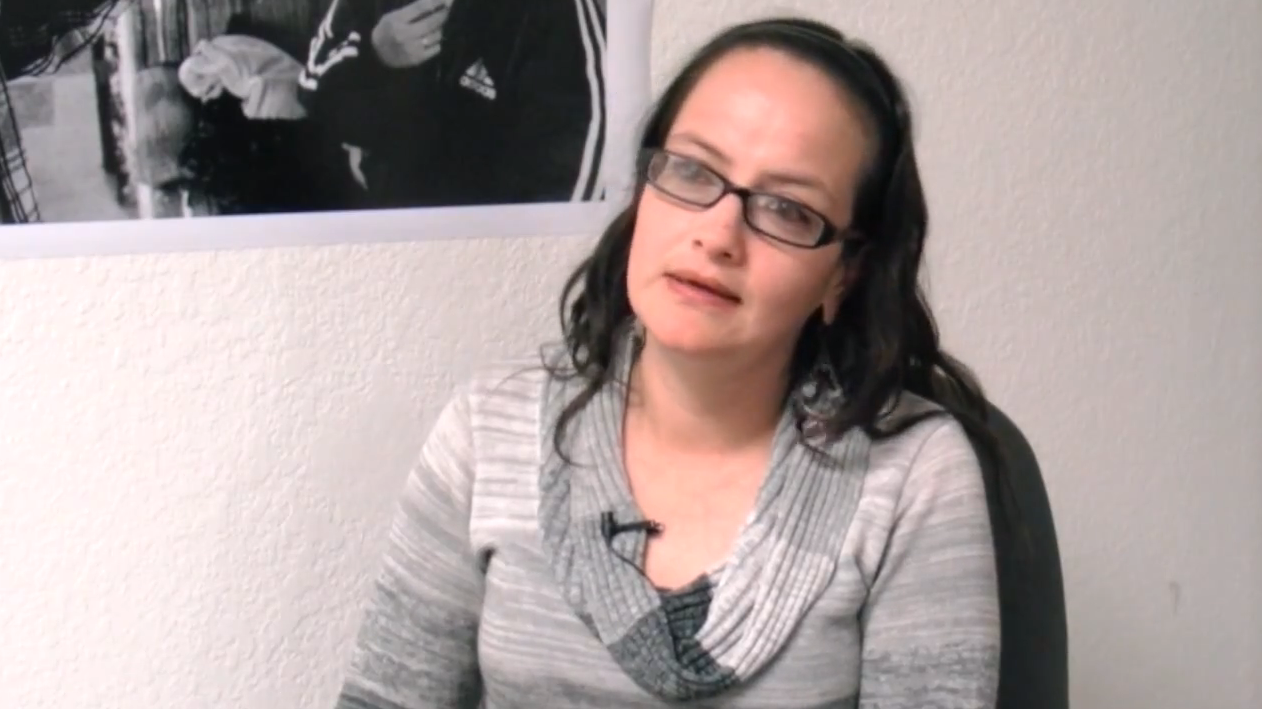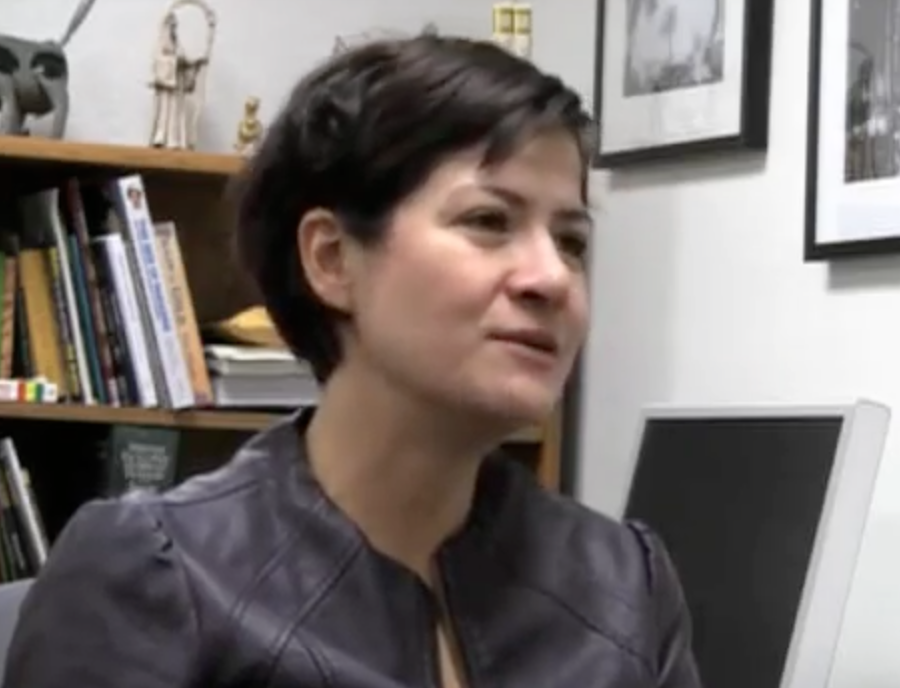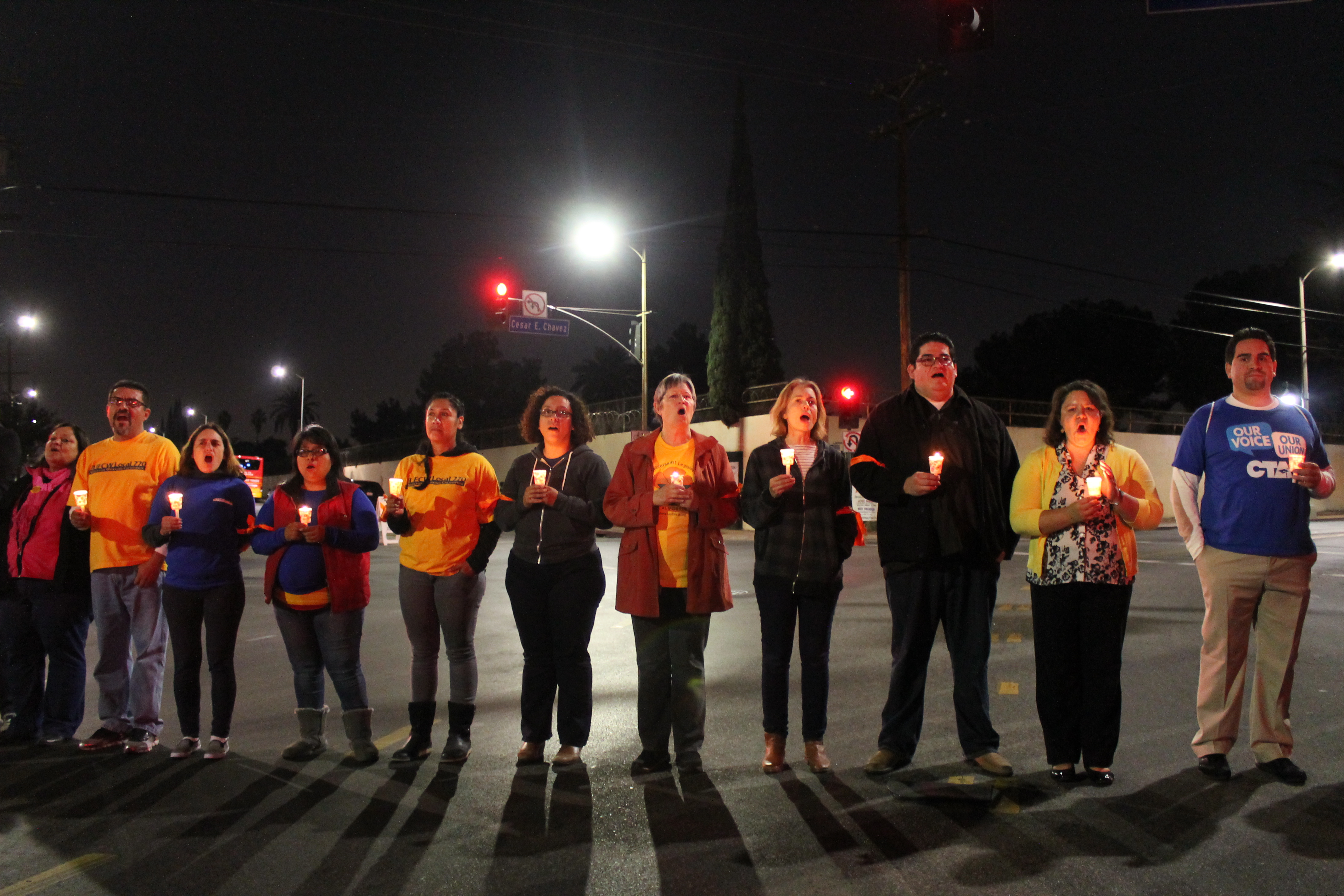Mexican investigative reporter dismantles a border city’s reality: killing in Juárez is not a crime, but a way of life—and the story of a teenager reveals that truth.
By JOANNA JACOBO RIVERA
EL NUEVO SOL
“In México, there are many crime factories.”
This comment from a Facebook user sits at the bottom portion of a post made on La Fábrica del Crimen‘s page, and in just those brief words, that avid cyber user describes a reality in Mexico—a true manufacturing plant where youths, most of them unwillingly, are molded into future assets of a drug war that gnaws at their very existence.
At par with this statement, Sandra Rodríguez Nieto, award winning investigative journalist based in Juárez, México, retells the story of a violent, corrupt and non-punitive society that has so easily, and almost not seemingly, infiltrated the minds of underage schoolers. Her new book, The Story of Vicente Who Murdered His Mother, His Father, and His Sister: Life and Death in Juarez (Verso, 2015), is the English-language version that does not stray far from its original publication “La Fábrica del Crimen”, published in Mexico in 2012.
Her new narration is the outcome of years dedicated to covering a corrupt local government and a weak judicial system as a reporter for El Diario in Juárez and was initially directed to a Mexican audience. However, this English-language edition draws in a more needed audience—American, to be precise. Rodríguez Nieto’s work means to inform and educate those north of the border, who remain clueless to the non-punitive governance that has taken Mexican people hostage for decades.
Vicente León Chávez’s story is one that grips at your soul, that scurries away sleep and that begs to question every ounce of human value that each of us possess. It is one that, undoubtedly, had social media been so prominent back in 2004 as it is now, would have ascended as major clickbait for all online publications; a story worth garnering traffic that just so happens to meticulously portray the grave faults in México’s government and the gradual descent of its moralless society.

Sandra Rodríguez Nieto. Photo: Courtesy of the Tom & Ethel Bradley Center.
What can possibly drive a human being to such an unstable state of mind to want to terminate another person’s life? Even worse, your parents’ life? But what promotes an even more far-fetched standpoint to believe that committing murder will not land you behind bars? It was the perfect crime, one that added itself to the overflowing unmarked graves that covered Juárez then–and still do now.
“Men died for being narcos, women for being alone”, that is how every murder was explained, and in Vicente’s case, the murder of his parents and younger sister was to be supposed as such. Instead, he is caught hours later, placed in handcuffs and locked away to only endure a more menacing life behind bars. While locked away, Vicente would fall in line with a gang of young assassins, Los Artistas Asesinos, only to later face his death moments after being freed at the hands of a rival gang member—his body never to be claimed by a loved one.
However, Rodríguez Nieto’s writings go beyond this adolescent’s fall-out and focus on a judicial system that allows its citizens, mainly its youth, to believe themselves invincible, impenetrable; incapable of falling prey to a corrupt government that rarely, almost never, probes a homicide.
During her time covering Juárez’s judicial system, Rodríguez Nieto confessed in an interview with El Nuevo Sol that her goal was never to write a book, but as her investigations progressed and as each event piled onto another, each murder followed the other, she gradually became at one with her need to untangle the knot that was a city so enriched by its own impotence.
Rodríguez Nieto takes us back to the early 90’s, when the likes of Amado Carrillo Fuentes, commonly known as “El Señor de los Cielos” or Lord of the Skies for air trafficking drug shipments, called the shots in the Juárez Cartel. She narrates the rise and fall of said kingpin and the outburst of homicides that followed his death in 1997—the date that marked the end to the discrete way of disappearing individuals that “got in the way.” Fast forward to a decade later, between 2008 and 2011, when more than 10,000 corpses would be deposited in every nook and cranny of the city.
In today’s U.S. media, stories pour that rehash a Mexican reality: violence, killings, mass disappearances, protests, corrupt government officials, poverty, usually without providing the context needed to understand the significance of each news event for both Mexicans and Americans. Likewise, an emphasis is always placed on the continuing efforts of mediocre Presidents—from Felipe Calderón Hinojosa to Enrique Peña Nieto—, their cabinets and their war on drugs.
Back in 2004, the coverage was less promising, save for a few journalists and investigators who felt the need to chronicle the mutilation that juarenses were undergoing. Let’s face it, Juárez is no El Paso—a community separated from one of the deadliest cities in the world by only by wire and armed gunmen at the ready.
Charles Bowden, journalist and writer, knew this and saw a direct involvement from the United States government. In his published book Murder CIty: Ciudad Juárez and the Global Economy’s New Killing Fields, co authored by Molly Molloy and Julián Cardona, Bowden documents a year of killings in that city, where the war is not on drugs but for drugs, a fuming city slowly going up in flames as it attempts to fuel addiction in the U.S. Ciudad Juárez was the main drug trafficking route and a large drug market on its own, and while Juarenses suffered the consequences that such a lucrative business brought to their doorsteps, government officials in Washington turned their heads, while not-foolishly extending their palms under the table, expecting their reward.
Unlike Bowden, Rodríguez Nieto makes no direct attempt to place most of the blame for a fallen society on United States’ influence to push free trade into México. Rodríguez Nieto draws the focus of her reporting on the internal struggle that has taken place within the city’s walls, although frequently mentioning the North American Trade Agreement (NAFTA), the northern country’s interest in cheap labor and the criminalization in federal prisons that surpassed boundaries and promoted the corruption of Juárez’s citizens. In Rodríguez Nieto’s book, corruption can not only come from outside sources, but rather must be equally motivated by those who govern at a local level.
For a while, in the late 1990s, Rodríguez Nieto tells us, Juárez gave international corporations a run for their money. The maquiladora industry was booming with transnational economic sponsorship pouring in, skyrocketing the demand for cheap labor and obligating thousands of migrants from southern states to head to this border town to help it flourish. But this boom came to a quick stagnation after China entered the World Trade Organization and the U.S. recession of early 2000s hit the maquiladora industry, leaving Juárez at the mercy of a corrupt political– business class and organized crime. Henceforth, two options for sustenance of life became viable for commonplace citizens: maquiladoras in the formal economy and drug trafficking or other criminal activity in the so-called “crime economy.” But a daily minimum wage of 60 Mexican pesos in exchange for working a more than 12-hour shift became the most significant incentive to find out other, better paid options in this emerging crime economy where kidnappings, carjackings, extortion and housejackings became staples of life in Juárez. By 2013, the daily minimum wage in Juárez would reach only 65 pesos, a value of $3.88 in U.S. dollars—a wage deemed far too egregious were it implemented in the U.S. labor market today.
Cheap labor was not only dealt by the international community and its partnership with the Mexican government, but also by criminal organizations that obligated its terrorized citizens to be at their beckoning call, or else. Thus came the pandillas, the creation of minute criminal groups that controlled certain streets and regions of Juárez under their own terms, while operating under the control of the Juárez and Sinaloa cartels, as well as other major criminal groups that fought for their right to control the United State’s drug trafficking industry, the local crime economy, and the prison population allegiance.
In the adult penitentiary, the Center for Social Readjustment (Cereso Prison), Los Aztecas governed inmate cells, but not before engaging in a two-hour brawl that left six inmates dead and severely injured 40 on December 17, 2005—all victims were members of Los Mexicles gang. Rodríguez Nieto writes that by this year—when Vicente was converted into an adult inmate—prisoners were no longer segregated by crime, but by gang affiliation. Controlling a business of corruption, drug addiction and crime was what this band was known for, specifically due to its Mexican-American origin in a Texas prison. U.S. deported immigrants garnered connections in Juárez since the early 2000s, paving the way for an prodigious affiliation with the Juárez Cartel, protecting those who operated under La Línea—formed by local police and former police members—and corrupting the minds of new found victims: youths.
By 2004, there were an estimated 300 gangs crawling city streets, the majority located in south east Juárez where a band known as Los Artistas Asesinos only grew in number—young individuals who were silently coerced into a life of crime.
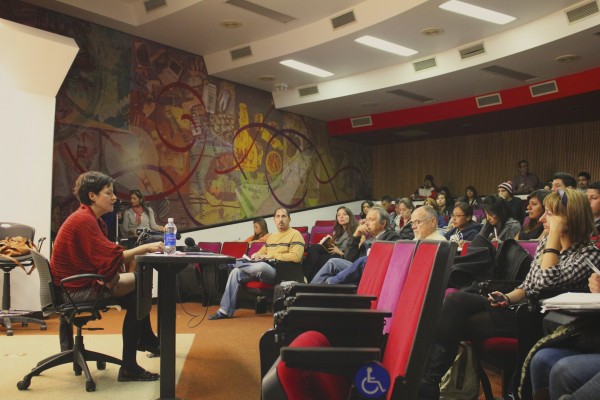
Sandra Rodríguez Nieto presents her book “La fábrica del crimen”, at CSUN’s Noski Auditorium. El Nuevo Sol/ Jesús Araujo
Such was the case with Vicente, the main character of our story, who becomes less of a cold-blooded assassin and more a victim as we as readers learn with every chapter that Vicente is the natural result of a society blinded by its own avarice, individualism, and corruption. And although Vicente’s allegiance to a band of criminals had no presence prior to his parricide, while locked away in juvenile detention he swore loyalty to Los Artistas Asesinos, a group of brilliant minds, youthfull, driven and talented in the arts, yet “tragically surrounded by an environment devoid of any wholesome, or even lawful, stimuli.”
Had Vicente’s stay at the School of Social Improvement for Minors, and subsequently Cereso Prison, been a prominent one, by the time of his reintegration with everyday juarenses, his lack of morality and indifference to societal mandates would have been cured. However, the reality that he endured confined in the juvenile facility was not the treatment he required to reignite social camaraderie within him, but rather an infection that, due to lack of proper care, spread itself and mutated into irreconcilable hatred, only feeding his lack of respect for human life.
Killing in Juárez is not a crime, but a way of life. And in its footsteps follow a pack of ill-nurtured teenagers who are subjected to a violent upbringing, as the lack of educational funds, recreational areas, job opportunities and appropriate citizen input during their formative years raise them to be the future pawns of a war on México’s own people.
In a society governed by an indiscriminating devaluing of human life, lack of basic services including schools, and no economic future but a job in a maquila, where else is a teenager to turn than to a life of crime? In December of 2014, the Department of Citizen Participation of Mexico revealed that over 5,000 youth stood behind bars for high grievances, while, that same year, over 7,000 had been liberated due to misdemeanors. The report also recalls that from 2011 to 2013, at least one third of all homicides were committed by adolescents.
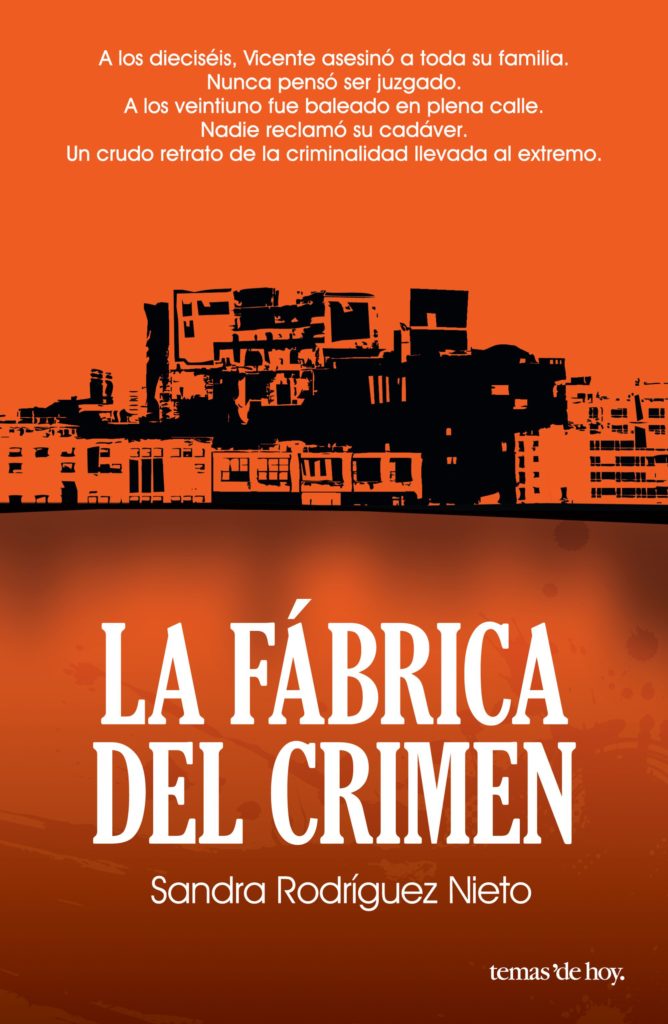
Cubierta del libro en español.
The society that Rodríguez Nieto describes is not a flurry of problems, but an effervescent symptom that, in its expansion, has damaged all extremities of life in Juárez, and at a larger scale, although not mentioned in her writings, all branches of government in Mexico. The impact of a supposed war on drugs was eating away at a city’s very ethical core, leaving a trail of corrupted breadcrumbs alongside schools and impoverished neighborhoods for its youth to pick up and devour.
Thus so, even the most keen and goodhearted, brilliant and able being can easily be persuaded into a life of crime, throwing away any sort of ethical compass. This is what runs in Juárez’s veins. It is what Rodríguez Nieto intends to portray by taking Vicente’s tale as mere example of what a city—impoverished and uneducated—, and its officials—corrupt and inept—, are capable of creating—only mirroring a reality that has enthralled México, almost completely.
Tags: Ciudad Juárez Joanna Jacobo La Fábrica del Crímen Sandra Rodríguez Nieto The Story of Vicente






